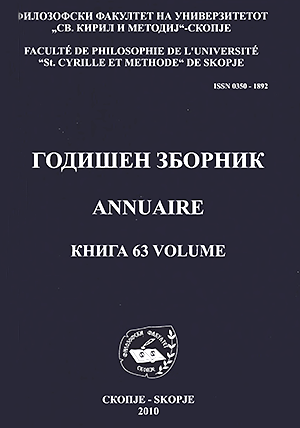THE CREATIVE PROCESSES IN THE EARLY CHRISTIAN ART IN TODAY’S MACEDONIA-ROTATION OF DECORATIVE MOTIVES AND COMPOSITIONS
DOI:
https://doi.org/10.37510/Keywords:
EARLY CHRISTIANITY, ROTATION/EXCHANGE OF DECORATIVE MOTIFS, BAPTISMAL AND EUCHARISTIC CONTEX, ARTISTIC INFLUENCESAbstract
Analyzing the decoration of the Early Christian sculpture, mosaics and frescoes preserved on the territory of the Republic of Macedonia, where the 5th and 6th C. churches prevail; it becomes obvious that the repertoire of applied motifs begins to spread from one medium into another, from one type of sculpture into another, as well as from mosaics into sculpture and from sculpture into frescoes. It seems to be part of the general process that goes on within the Byzantine Empire, in order to strike the unification of the decoration on the level of semiotics, helped by applied colours, and thus, to resound the importance of certain motifs that are repeated many times within one ob- ject-the cross, flora and the fauna the inhabits the paradise (small birds, peacocks, sheep, cross and leaved cross, water spring, rivers of paradise, human figures under arches as indication of paradise architecture etc). The meaning of some of the compositions and pair of animals within the mosaics, frescoes and sculpture is either indicating salvation of the soul, her journey to heaven, or has baptismal and Eucharistic meaning.
Downloads
Published
Issue
Section
License
Copyright (c) 2010 Snezhana Filipova

This work is licensed under a Creative Commons Attribution 4.0 International License.


